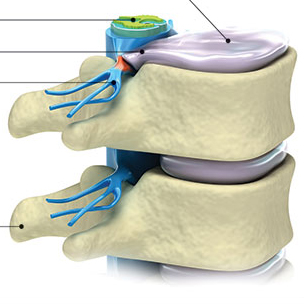![]() Causes of hip pain | Understanding symptoms | Nonsurgical treatments | Surgical options | Hip prevention
Causes of hip pain | Understanding symptoms | Nonsurgical treatments | Surgical options | Hip prevention
Understanding symptoms
What do symptoms mean? Can you self-diagnose your hip problem? How can you decide if you need to see a doctor for your hip pain?
Here is some helpful information.
- Indicators of a serious problem
- The pain causes you to limp
- The legs feel as though they are different lengths
- You have a limited range of motion in the hip and you hear creaking noises when move it
- Rest relieves the pain and using it hurts
- The hip feels stiff
Misleading Symptoms
Some symptoms that may seem like a hip problem may actually be a more severe back problem. Be sure to check out all persisting hip pain with a specialist. For instance, a tingling or numb sensation in the hip or upper thighs may actually be a symptom of spine damage. Also, when pain does not lessen when lying down or sitting in a way that relieves pressure, than the problem my be rooted in the back, not the hip. This type of pain should be treated immediately.
How to choose a doctor
Board-Certification
A physician who is board-certified generally has a few years experience past his or her residency and has taken an exam in his or her specialty. A younger physician coming out of a fellowship may be 'board-eligible' in that they will soon take the exam to be board-certified. However, as a rule of thumb, if a doctor is several years out of residency this may be something to be concerned about. Most physicians understand the importance of board-certification. If a physician is unable to "pass his boards" that can be a bad signal.
What is the doctor's reputation? How specialized is the doctor? Is the doctor fellowship-trained?
As in anything else in life, "practice makes perfect" when it comes to medicine. A doctor who specializes in a certain problem, naturally has more experience in the field than a doctor who is a generalist. Research has shown that doctors who specialize, and see a high volume of patients with a specific problem have better outcomes.
To see how specialized a doctor is in hip, call the office and ask what percentage of the patients are seen in hip. Ideally you want a specialist where 80 percent of his practice is just hip patients.
Fellowship training is another indicator of a doctor's skill. Fellowship training is the highest level of training available for a doctor in any given subspecialty of medicine. For instance, a doctor finishes medical school, then goes on to do an internship and a residency. A fellowship is an optional, additional level of training that takes his or her expertise one step higher. Fellowship training exposes the doctor to the most complex medical cases and advanced treatments for medicine in their specialty area.
Know who your doctor is
To find out how qualified your physician is, you may contact the Texas Board of Medical Examiners. This will offer credentials on any type of physician - not just orthopaedic surgeons.
Go the extra mile for the best health care
Generally speaking, the best super specialists choose to practice in larger cities. If you live in a rural area, you will need to travel to see the best specialist.
How a doctor diagnoses hip problems
When a patient visits a hip specialist to help diagnose a hip problem, there are three parts to the examination; the medical history, the physical examination, and diagnostic imaging.
During the medical history, the hip surgeon will try to find out if you have developed your problem through heredity, through lifestyle habits or through a sudden sports injury. This will give the physician the best idea of how to find out exactly what is wrong, and then suggest proper treatment of the injury. You should indicate to your doctor if you have been using steroids since they can cause joint inflammation. Lyme Disease from the deer tick and rheumatoid arthritis can also trigger joint inflammation, for instance.
Following the medical history, your doctor will give a physical examination to hear or feel what is wrong. This portion of the exam is somewhat like a carpenter trying to find out why a hinge on a door is squeaking or is not properly aligned by opening and closing the door a few times to listen to what is going on. This will show the doctor which tests he or she should perform to find out the cause of your pain.
Next, the physician may have an MRI or x-ray image taken of your hip. An X-ray often times does not provide the clarity needed to see precisely what is wrong. In these instances, an MRI or CT-Scan is used. X-rays, for example, only show bones. MRI and CT-Scans show soft tissues.








